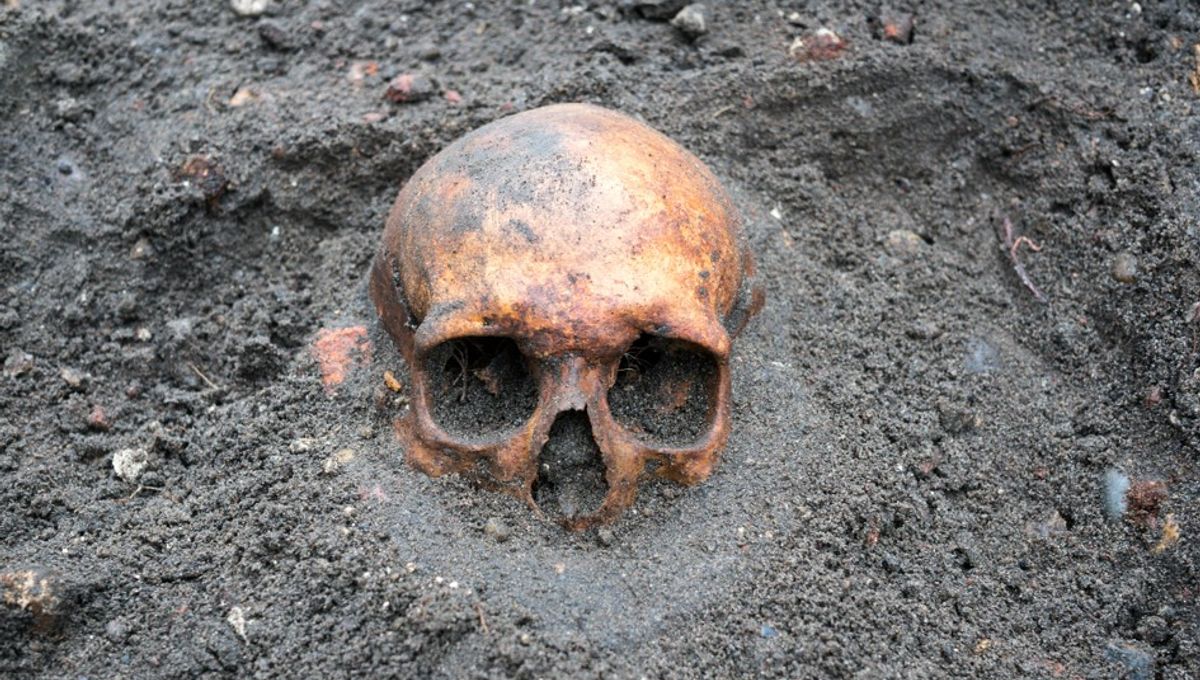
A 2,000-year-old Maya burial in Belize has revealed some wild insights into the nature of pre-Hispanic removals. By identifying the remains of two non-local individuals, a researcher suggests that these bones may have been packed up and relocated when the site’s inhabitants first moved in, in an attempt to infuse their new house with the spirits of their ancestors.
ADVERTISEMENT
Dated to the Late Preclassic period – which ran from 300 BCE to 250 CE – the grave was discovered in a commoner household known as the Dancer Group, near the ancient Maya city of Dos Hombres. To learn about the house’s long-dead residents, study author Angelina J. Locker analyzed a fragmented skeleton that was buried along with the teeth of two other individuals.
Based on the presence of a mound of mussel shells next to the primary skeleton, it has been suggested that this person was probably venerated with a seafood feast and may therefore represent a founding ancestor of the Dancer Group. Previously, the other human remains within this grave have been interpreted as sacrificial offerings to this progenitor, yet Locker presents several reasons to doubt this assumption.
Firstly, the fact that the Dancer Group is a non-elite household makes it unlikely that anyone living there would have been honored with a human sacrifice. On top of this, a lack of cut marks that would represent butchering or flaying suggests that neither of these secondary burials were intentionally dispatched.
Seeking an alternative explanation, the study author points out that the Maya saw the body as divisible into multiple parts. One of these components – referred to as ‘Ik – represents “the breath of the soul” and was typically associated with the mouth and jaw.
“The ancestors’ essences were thought to be associated with Ik’, and thus, the embodied form resided in the mouth, explicitly the teeth,” writes Locker. That being so, she suggests that the teeth found in the grave may belong to the ancestors of this founding individual, and may have been brought to the residence from elsewhere in order to maintain the household’s connection to a deeper lineage.
To investigate whether or not this was the case, Locker conducted isotopic analyses on the remains of all three individuals within the burial. Sure enough, while the primary burial showed signs of having been raised on a locally sourced diet, the teeth of the two other individuals turned out to be from further afield.
ADVERTISEMENT
“The secondary burials discussed here were identified as non-local individuals and further defined as emergent ancestors, used to create place for living descendants by linking living residents and buried ancestors with the bodies of their preceding ancestors,” writes the study author. In other words, the first person who died at the Dancer Group was buried with the remains of their antecedents, which had been brought from elsewhere in order to connect the newly-founded household with these forefathers.
“They were used to legitimize the people living at the Dancer Group, granting lineage to place for [the primary burial], who thus acts as a founding ancestor for the household,” concludes Locker.
The study has been published in the Journal of Anthropological Archaeology.
Source Link: Ancient Maya Took Their Ancestors’ Bones With Them When They Moved House